The Houston Astros are a Major League Baseball (MLB) team based in Houston, Texas. As a member of the American League (AL) West Division, they share a state rivalry with the Texas Rangers. The team's name, "Astros," pays homage to Houston's connection with space exploration and the Johnson Space Center. They play their home games at Daikin Park. The Houston Astros are a significant entity in professional baseball.
1914: Boston Braves World Series
In 2005, the Astros became the first team since the 1914 Boston Braves to qualify for the postseason after being 15 games under .500.
1951: Warren Giles President of National League
From 1951 to 1969, Warren Giles served as the president of the National League.
August 1960: Continental League folded
In August 1960, the Continental League, which aimed to compete with the National and American Leagues, ultimately folded.
October 17, 1960: National League granted expansion franchise
On October 17, 1960, the National League granted an expansion franchise to the Houston Sports Association, allowing them to begin play in the 1962 season.
January 17, 1961: Purchased the Houston Buffaloes
On January 17, 1961, the Houston Sports Association successfully purchased the Houston Buffaloes, which were majority-owned by William Hopkins.
1961: Houston Buffaloes until 1961
From 1888 until 1961, the Houston's professional baseball club was the minor league Houston Buffaloes.
1961: Manager Harry Craft joined Houston
In 1961, Manager Harry Craft joined Houston, remaining in the same position until the end of the 1964 season.
1961: Team named Colt .45s
In 1961, the new Houston team was named the Colt .45s after a "Name the Team" contest was won by William Irving Neder.
April 10, 1962: Inaugural season started
On April 10, 1962, the Colt .45s began their inaugural season against the Chicago Cubs, managed by Harry Craft.
1962: MLB team to Texas in 1962
Expansion from the National League eventually brought an MLB team to Texas in 1962.
1962: All-time record since 1962
From 1962, the Houston Astros had an all-time record of 5,009–4,965–5 (.502).
1962: Colt 45 Team Founded
In 1962, Bill Giles was one of the founders of the original Colt 45 team.
1962: MLB franchise debuted as the Colt .45s
In 1962, Houston's MLB franchise debuted as the Colt .45s. The original home uniforms featured a navy pistol with orange smoke coming out of the barrel to form the "C" in "Colts". The road uniforms featured the city name written in navy block letters with orange trim, and the flag of Texas patch was placed on the left sleeve. Caps were all-navy featuring ".45s" in orange letters in front.
1962: Astros entered National League as an expansion team
In 1962, the Houston Astros, originally named the Houston Colt .45s, joined the National League as an expansion team, alongside the New York Mets.
1962: Begin play in the 1962 season
On October 17, 1960, the National League granted an expansion franchise to the Houston Sports Association for them to begin play in the 1962 season.
1963: Jimmy Wynn, Rusty Staub, and Joe Morgan made their major league debuts
The 1963 season marked the major league debuts of young talents Jimmy Wynn, Rusty Staub, and Joe Morgan for the Houston Colt .45s.
December 1, 1964: Team renamed the Astros
On December 1, 1964, the Houston Colt .45s announced their name change to the "Astros".
1964: Jim Umbricht died of cancer
In 1964, relief pitcher Jim Umbricht passed away from cancer on April 8, just before Opening Day.
1964: Harry Craft remained manager until 1964
Manager Harry Craft, who had joined Houston in 1961, remained in the same position for the team until the end of the 1964 season.
1965: Moved into the Astrodome
In 1965, the renamed Houston Astros moved into the Astrodome, their new domed stadium, which was called the "Eighth Wonder of the World".
1965: Jersey number retired
In 1965, the team retired Jim Umbricht's jersey number, 32, in his honor.
1965: Renamed the Astros and Moving to the Astrodome
In 1965, the team was renamed the Astros and moved to the Astrodome. They took to the field in home uniforms featuring the "shooting star" design. The uniforms initially featured "Astros" in navy with orange trim, and the cap now sported an orange star with "H" in block serif letters. The road uniforms remained the same save for the Astros logo replacing the Texas flag (the same logo was also applied on the home uniforms).
1966: Introduction of AstroTurf
In 1966, the new artificial turf called "AstroTurf" was created for the Astrodome due to the inability of grass to grow inside the stadium.
1967: Spec Richardson promoted back to GM
In 1967, Spec Richardson was promoted back to General Manager for the Astros, a role he held until 1975.
1967: Don Wilson pitched a no-hitter
In 1967, rookie Don Wilson pitched a no-hitter for the Houston Astros on June 18.
April 15, 1968: Pitching duel between Don Wilson and Tom Seaver
On April 15, 1968, Astros' Don Wilson and Mets' Tom Seaver engaged in a remarkable pitching duel that lasted six hours, with the game ending in the 24th inning.
1969: Warren Giles President of National League
From 1951 to 1969, Warren Giles served as the president of the National League.
1969: Astros' Roster Changes and Wilson's No-Hitter
In 1969, the Astros experienced significant roster changes with Aspromonte traded to the Braves and Rusty Staub to the Expos for Jesús Alou and Donn Clendenon, though Clendenon's refusal to report led to Jack Billingham joining the Astros. May 1, 1969, Don Wilson pitched a no-hitter, striking out 18. The team tied a major league record with seven double plays and had a ten-game winning streak. The Astros finished the 1969 season with an 81-81 record.
1970: César Cedeño's Debut and Team Performance
In 1970, the Astros anticipated being a strong contender in the National League West. June 1970, César Cedeño debuted, batting .310, while Menke and Alou also performed well. Despite improved batting averages, the team's ERA increased, and Houston finished fourth in 1970.
November 1971: Blockbuster Trade with Cincinnati Reds
In November 1971, the Astros traded Joe Morgan, Denis Menke, Jack Billingham, César Gerónimo, and Ed Armbrister to the Cincinnati Reds for Lee May, Tommy Helms, and Jimmy Stewart, a move that helped create the Big Red Machine.
1971: Oakland Athletics Division Title
From 1971 to 1975, the Oakland Athletics won the division title.
1971: Astros' Performance and J.R. Richard's Debut
In 1971, Roger Metzger's acquisition shifted Menke to first base and Watson to the outfield. Larry Dierker was selected to the All-Star Game but couldn't participate due to an injury. César Cedeño led the club with 81 RBIs, and J. R. Richard debuted in September of 1971.
1971: Astros Invert Uniform Colors
In 1971, the Astros made some changes to their uniform: they kept the same style they had in previous seasons, but inverted the colors. What was navy was now orange and what was orange was now a lighter shade of blue. The players' last names were added to the back of the jerseys.
1971: Uniform Color Changes
In 1971, the Astros updated their uniforms, inverting the colors with orange replacing navy and a lighter blue replacing orange, and adding player names to the back of the jerseys.
1971: First team to win the AL West division
The Houston Astros became the first team to win the AL West division in four straight years since the 1971–1975 Oakland Athletics.
1972: Astros' Offensive Power and Cedeño's All-Star Season
In 1972, Lee May's acquisition added power to the Astros' lineup, with multiple players hitting 20+ home runs. Cedeño batted .320, stole 55 bases, made the All-Star team, and hit for the cycle in August 1972. The Astros finished the season at 84–69, their first winning season.
1972: Uniform Fabric Change to Polyester
In 1972, the Astros' uniform fabric was changed to polyester, with elastic waistbands replacing belts and zippers replacing buttons.
1972: Reds win National League Pennant
In 1972, the Reds, who had an off year in 1971, were the National League Pennant winner.
1972: Polyester uniforms introduced
In 1972, the uniform fabric was changed to polyester. Belts were replaced by elastic waistbands, and jerseys zipped up instead of having buttons.
1973: Astros' Run Production Down Despite Strong Individual Performances
In 1973, despite strong individual performances from players like Lee May, Cesar Cedeño, and Bob Watson, the Astros' run production was down, and injuries to the pitching staff limited the team to an 82–80 fourth-place finish.
1974: Milo Hamilton Commentates Hank Aaron's 715th Home Run
In 1974, Milo Hamilton was on the call for Hank Aaron's 715th career home run.
January 5, 1975: Don Wilson's Death
On January 5, 1975, Astros pitcher Don Wilson was found dead in his car at 29 years old due to carbon monoxide asphyxiation.
April 13, 1975: Don Wilson's Number Retirement
On April 13, 1975, Don Wilson's number 40 was retired by the Astros.
1975: Oakland Athletics Division Title
From 1971 to 1975, the Oakland Athletics won the division title.
1975: Spec Richardson remained GM until 1975
General manager Spec Richardson continued with the organization as business manager but was later promoted back to GM for the Astros from 1967 until 1975.
1975: Astros' Worst Season and Managerial Change
In 1975, the Astros had one of their worst seasons with a 64–97 record, leading to manager Preston Gómez being replaced by Bill Virdon.
1975: Uniform change coming.
In 1975, the Astros would shock baseball and the fashion world with their new uniforms.
1975: Introduction of New Astros Uniforms
The 1975 season marked the introduction of the Astros' new and unconventional uniforms, featuring a block of yellow, orange, and red stripes, a dark blue star, and numbers on the pant leg. The uniforms, intended to resemble a fiery rocket trail, received mixed reviews but were popular among the public.
1975: Won the AL West division
The Houston Astros became the first team to win the AL West division in four straight years since the 1971–1975 Oakland Athletics.
1975: End of polyester uniforms
The polyester uniforms became popular with fans, but would last only until 1975.
1976: Astros Improved Performance and Key Players
In 1976, the Astros improved under manager Bill Virdon, finishing in third place with an 80–82 record. Key players included César Cedeño, Bob Watson, and José Cruz. Larry Dierker threw a no-hitter and won the 1,000th game in the Astrodome before the end of his playing career as an Astro.
1977: Astros Finished Third Again in 1977
The Astros finished in third place again in 1977 with a record of 81–81.
May 1979: John McMullen Buys the Astros
In May 1979, John McMullen agreed to buy the Astros, increasing the team's chances to compete in the free-agent market.
1979: Loss to the Reds
In 1979, Dick Wagner's Reds defeated the Houston Astros to win the NL West title.
1980: Astros debut cleaner uniform
Also in 1980, the Astros debuted a significantly cleaner uniform, relegating the rainbows to the sleeves. The design was initially worn on the road.
1980: Mention of the 1980 Squad
By 1982, only four players and three starting pitchers remained from the 1980 squad.
1980: National League Championship Series against the Phillies
In 1980, the Astros faced the Philadelphia Phillies in the National League Championship Series. The Phillies won the opener 3-1. Game four went into extra innings, with the Phillies taking the lead and the win in the tenth inning, tying the series.
1980: Astros' Strong Pitching Staff and J.R. Richard's Stroke
In 1980, the Astros had a strong pitching staff. J.R. Richard started the All-Star game, but on July 30, 1980, he suffered a stroke, ending his promising season.
1980: Made the playoffs for the first time
In 1980, the Houston Astros made their first appearance in the playoffs.
1980: NL West in 1980
The Astros also became the first team in Major League history to win three different divisions: National League West in 1980.
1980: End of multi-colored stripe uniforms on the road
The Astros wore the multi-colored stripe uniforms both at home and on the road until 1980, though it underwent a few minor modifications with the navy star and number style.
1980: Astros Wore Striped Uniforms Until 1980
The Astros wore their bright striped uniforms both at home and on the road until 1980.
1981: Player Strike and Astros' Playoff Berth
In 1981, a player strike occurred between June and August. Nolan Ryan threw his fifth no-hitter on September 26, 1981. The Astros advanced to the playoffs as winners of the second half, but lost to the Dodgers in the NLCS.
1982: Astros Rebuilding Phase
By 1982, only a few players remained from the 1980 squad. The Astros began rebuilding, firing Bill Virdon and trading Don Sutton in 1982. Minor leaguer Bill Doran was called up in September.
1982: Rainbow shoulder look appears on home games
In 1982, the rainbow shoulder look began appearing on select home games as well. In addition, the navy cap returned with this uniform, and the fabric was changed to cream, and a white version was added for home games that same year.
1982: Astros Wear Gray Uniforms On The Road
The year 1982 marked the first time since that the Astros wore grey uniforms on the road.
1983: Trade for Mike Scott and Doran's Emergence
Before the 1983 season, the Astros traded Danny Heep to the Mets for pitcher Mike Scott. Bill Doran took over at second and became the everyday second baseman for the next seven seasons. The Astros finished third in the National League West in 1983.
1983: Orange Cap Retired
In 1983, the orange cap was retired.
1984: Thon Injury and Davis Call-Up
The 1984 season started badly when Dickie Thon was hit in the head by a pitch. In September 1984, the Astros called up rookie Glenn Davis after he posted impressive numbers in AAA. The Astros finished in second place.
1985: Spring Training at Osceola Heritage Park
From 1985 to 2016, the Astros held spring training at Osceola Heritage Park in Kissimmee, Florida.
1985: Scott's New Pitch and Niekro Trade
In 1985, Mike Scott learned the split-finger fastball. In June 1985, Davis made the starting lineup. In September 1985, Joe Niekro was traded to the Yankees for two minor league pitchers and Jim Deshaies. The Astros finished in fourth place.
1985: Milo Hamilton Astros Debut
In 1985, Milo Hamilton began broadcasting play-by-play for the Astros.
1985: Firing of General Manager and Manager
In 1985, after a fourth-place finish, the Astros fired general manager Al Rosen and manager Bob Lillis. Rosen was replaced by Dick Wagner, and Lillis was replaced by Hal Lanier.
1986: Changes After 1986 Season
After the 1986 season, the Astros phased out the rainbow uniforms, kept a five-stripe rainbow design on the sleeves, and saw the departure of Nolan Ryan and José Cruz as the team entered a rebuilding phase.
1986: Astros Winning Division
In 1986, Phil Garner was a star on the division-winning Astros team.
1986: Loss in Game 3 of NLCS
In 1986, during Game 3 of the National League Championship Series against the New York Mets, the Astros were leading 5-4 in the bottom of the 9th inning at Shea Stadium, but closer Dave Smith gave up a two-run home run to Lenny Dykstra, resulting in a 6-5 loss for the Astros.
1986: Astrodome Hosts All-Star Game
In 1986, the Astrodome hosted the All-Star Game, with Astros players Mike Scott, Kevin Bass, Glenn Davis, and Dave Smith representing the team. The Astros clinched the division title after sweeping a 3-game series against the San Francisco Giants, with Mike Scott pitching a no-hitter in the final game. Scott won the Cy Young Award at the end of the season.
1986: NL West in 1986
The Astros also became the first team in Major League history to win three different divisions: National League West in 1986.
1987: Rainbow uniforms retired
By 1987, the rainbow shoulder uniform became the Astros' primary look, retiring the original rainbow uniforms.
June 1988: Craig Biggio Debuts
In June 1988, Craig Biggio made his debut for the Astros, joining new prospects Ken Caminiti and Gerald Young.
1989: Buttons and belts return to uniform
Prior to the 1989 season, the pullover design was retired and buttons and belts returned to this uniform.
1990: Biggio Everyday Catcher and Trades
By 1990, Craig Biggio became the everyday catcher for the Astros. The team traded Glenn Davis to Baltimore for Curt Schilling, Pete Harnisch, and Steve Finley.
1990: Orbit Debut
In 1990, Orbit was the team's official mascot until 1999.
1991: Possible Move to Washington, D.C.
In the 1991 off-season, the Astros management announced their intention to sell the team and move the franchise to the Washington, D.C. area due to declining attendance at the Astrodome.
1993: Uniform and team color switch
Coinciding with the change in ownership, the team switched uniforms and team colors after the 1993 season in order to go for a new, more serious image. The team's trademark rainbow uniforms were retired, and the team's colors changed to midnight blue and metallic gold.
1993: Played the last season at NL West division
The 1993 season was the last season the Houston Astros played in the NL West division.
1994: Second in Division
In 1994, the Astros finished second in their division during a strike year.
1994: Bob Watson Hired as General Manager
In 1994, the Astros hired Bob Watson as one of the first African American general managers.
1994: Joined the NL Central division
In 1994, the Houston Astros transitioned to the NL Central division.
1995: Bob Watson Leaves the Astros
In 1995, Bob Watson left the Astros to become the general manager of the New York Yankees.
1995: Second in Division
In 1995, the Astros finished second in their division.
1996: World Series championship for the Yankees
In 1996, Bob Watson helped lead the New York Yankees to a World Series championship.
1996: Second in Division
In 1996, the Astros finished second in their division.
1997: Road uniform Star tweak
In 1997 the road uniform was tweaked with the star now affixed next to the word "Houston". The letters were written in a more futuristic manner. The Astros also wore midnight blue alternates with "Astros" in white with gold trim, changed in 1997 to only feature the flying star logo.
1997: Division Title
In 1997, the Astros won a division title, but were eliminated in the first round of the playoffs against the Atlanta Braves.
1997: NL Central from 1997
The Astros also became the first team in Major League history to win three different divisions: National League Central from 1997.
1998: Division Title and Record Wins
In 1998, the Astros set a team record with 102 victories and won another division title, only to be eliminated in the first round of the playoffs by the San Diego Padres.
1998: In 1998
On September 29, 2017, the Astros won their 100th game of the season, the second time the Astros finished a season with over 100 wins, the first being in 1998.
1999: Orbit Mascot Departure
In 1999, Orbit ceased to be the team's mascot.
1999: KTRH Partnership
In 1999, The Houston Astros started a partnership with KTRH (740 AM) which lasted until 2012.
1999: Division Title
In 1999, the Astros won a division title and were eliminated in the first round of the playoffs against the Atlanta Braves.
1999: NL Central from 1999
The Astros also became the first team in Major League history to win three different divisions: National League Central from 1999.
2000: Junction Jack Introduction
For the 2000 season, Junction Jack, a rabbit, was introduced as the team's mascot, replacing Orbit.
2000: Move to Enron Field
In 2000, the Astros moved to a new stadium, originally named The Ballpark at Union Station but renamed Enron Field after a naming rights deal with Enron. The stadium featured a retractable roof and more intimate surroundings. There was a replica 4-4-0 locomotive that moved across the outfield and whistled after home runs.
2000: Move to Minute Maid Park
Moving to Minute Maid Park (originally Enron Field) in 2000, the Astros took to the field wearing vintage-inspired uniforms. For the first time, navy was not part of the team's palette, and the Astros uniforms featured brick red, sand and black colors. The colors were inspired by the location of their new ballpark which formerly housed a railroad depot.
2001: Mariners last series win before 2022
In 2001, the Seattle Mariners won their last series, before they return to playoff success in 2022.
2001: Since 2001
The Astros clinched their first division title as a member of the American League West division, and first division title overall since 2001.
2002: John Burkett's streak with the Boston Red Sox
In 2002, John Burkett had a long winning streak with the Boston Red Sox.
2002: Uniform Tweaks and Color Alternations
In 2002, the Astros' alternate white uniforms featured all letters in brick red with sand trim, initially with the brick red star logo on the left chest before switching to the "Astros" wordmark. The Astros also wore black alternate home and road uniforms, with "Houston" (road) and "Astros" (home) emblazoned in front, but switched to brick red alternates by 2002. The letters on both uniforms are in sand with brick red trim.
2002: Number 57 Withdrawn After Darryl Kile's Death
While not officially retired, the Astros have not reissued number 57 since 2002, when former Astros pitcher Darryl Kile died as an active player with the St. Louis Cardinals.
2003: Roger Clemens Retirement
In 2003, Roger Clemens had retired after the season with the New York Yankees.
2004: Playoff Run and Clemens' Cy Young Award
In 2004, the Astros added Andy Pettitte and Roger Clemens (who came out of retirement) to their roster. After a mediocre start, manager Jimy Williams was fired and replaced by Phil Garner. The Astros earned the NL wild-card spot, defeated the Braves in the Division Series, but lost the National League Championship Series to the St. Louis Cardinals. Clemens earned a record seventh Cy Young Award and Carlos Beltrán was a key addition in their playoff run.
2004: 2004 NLCS
In 2004, the National League Championship Series featured a rematch of the 2004 NLCS.
2004: Gerry Hunsicker Oversees Astros
Until 2004, Gerry Hunsicker oversaw the building of the Astros into one of the better organizations in the Major Leagues.
January 9, 2005: Beltrán Signs with Mets
On January 9, 2005, Carlos Beltrán signed a long-term contract with the New York Mets.
2005: Wild Card Berth
In 2005, the Astros had a poor start but recovered to win a wild card berth on the final day of the regular season. They had a 42-17 record from late May to the end of July and developed an excellent pitching staff.
2005: First World Series appearance
In 2005, the Houston Astros made their first World Series appearance, but were swept by the Chicago White Sox.
2006: Offseason Changes
In the 2006 offseason, the Astros signed Preston Wilson, moved Berkman to first base, and traded for Aubrey Huff. They released Wilson in August after he complained about playing time. Despite winning 10 of their last 12 games, the Astros missed a playoff appearance after losing the final game of the season to the Atlanta Braves.
April 28, 2007: Hunter Pence's contract purchased and debut
On April 28, 2007, the Astros purchased the contract of Hunter Pence, a top minor league prospect. Pence debuted that night, getting a hit and scoring a run.
May 2007: Astros Suffer Worst Losing Streak
In May 2007, the Astros suffered one of their worst losing streaks of 10 games.
2007: Jeff Bagwell's contract option declined; Clemens and Pettitte file for free agency; Taveras, Buchholz, and Hirsh Traded
In 2007, the Astros declined Jeff Bagwell's contract option, effectively ending his 15-year career with the team. Roger Clemens and Andy Pettitte filed for free agency. Additionally, Willy Taveras, Taylor Buchholz, and Jason Hirsh were traded to the Colorado Rockies for Jason Jennings and Miguel Asencio.
February 2008: Astros Sign Backe, Wigginton, Borkowski and Chacón
In February 2008, the Astros signed Brandon Backe, Ty Wigginton, Dave Borkowski, and Shawn Chacón to one-year deals to bolster their roster.
2008: Crane's Previous Agreement and Attempt to Buy Other Teams
In 2008, Crane had a handshake agreement with McLane for the franchise but backed out. Crane also attempted to buy the Chicago Cubs in 2008.
2008: Astros Regress
In 2008, the Astros regressed, finishing with a record of 86-75.
2009: Astros Continued Regression
In 2009, the Astros continued to regress, finishing with a record of 74-88. Cecil Cooper was fired after the season.
November 2010: Drayton McLane Announces Astros for Sale
In November 2010, Drayton McLane announced the Houston Astros were being put up for sale.
2010: Brad Mills' First Season as Manager; Oswalt and Berkman Traded
The 2010 season marked Brad Mills' first as the Astros' manager. On July 29, Roy Oswalt was traded to the Philadelphia Phillies, and on July 31, Lance Berkman was traded to the New York Yankees. The Astros finished with a 76–86 record in 2010.
March 2011: Jim Crane Emerges as Front-Runner to Purchase the Franchise
In March 2011, Jim Crane emerged as the front-runner to purchase the Astros franchise.
July 30, 2011: Hunter Pence Traded to Philadelphia Phillies
On July 30, 2011, the Astros traded outfielder Hunter Pence to the Philadelphia Phillies.
November 15, 2011: Crane Agrees to Move Astros to American League
On November 15, 2011, Jim Crane agreed to move the Astros to the American League for the 2013 season as part of MLB's divisional realignment. MLB gave Crane a $70 million concession for the switch.
November 2011: McLane's Age Noted
In November 2011, it was noted that McLane was 75 years old.
December 2011: Jeff Luhnow Named General Manager
In December 2011, Jeff Luhnow was named general manager of the Astros.
2011: Surpassing 2011 Season for the Worst Record in Astros History
On October 3, 2012, the Astros surpassed the 2011 season for the worst record in Astros history.
2011: 1975 Season Record Broken in 2011
The Astros' 1975 record of 64-97 remained the worst record in franchise history until 2011.
November 2, 2012: Astros Unveil New Look
On November 2, 2012, the Astros unveiled their new look in preparation for their move to the American League for the 2013 season, featuring a return to navy and orange colors.
November 6, 2012: Astros Hire David Stearns
On November 6, 2012, the Astros hired David Stearns as the team's new assistant general manager.
2012: Milo Hamilton Retirement
At the end of the 2012 season, Milo Hamilton, the Astros' play-by-play broadcaster since 1985, retired.
2012: Television Announcers
During the 2012 season, Bill Brown and Jim Deshaies announced Astros games on television.
2012: Astros Eliminated from Playoffs
In 2012, the Astros were eliminated from playoff contention before September 5.
2012: Last Season in the NL
In November 15, 2011, it was also announced that 2012 would be the last season for the Astros in the NL.
2012: Inaugural Class of Hall of Fame Members
On January 26, 2019, the team announced plans for a team Hall of Fame along with an inaugural class of inductees (including all retired numbers and members of the 2012 Walk of Fame).
2012: End of NL Play; Worst Record in MLB
On October 3, 2012, the Astros ended over 50 years of National League play with a loss to the Chicago Cubs and prepared to join the American League. They finished with a 55-107 record, the worst in MLB for the 2012 season.
2012: Played the last season at NL Central division
The 2012 season was the last season the Houston Astros played in the NL Central division.
September 27, 2013: CSN Houston Filed for Chapter 11 Bankruptcy
On September 27, 2013, Comcast SportsNet Houston filed for Chapter 11 Bankruptcy.
2013: KBME Becomes Astros' Flagship Radio Station
In 2013, KBME, Sportstalk 790 AM, became the Astros' flagship radio station, replacing KTRH. This change limited the listening range outside of Houston.
2013: Orbit Mascot Return
In 2013, Orbit returned as the Astros' mascot after a 13-year absence, coinciding with the team's debut in the American League.
2013: Astros Join American League West
In 2013, the Astros joined the American League West with the Rangers and changed their rivalry from an interleague to an intra-division rivalry, the Astros played their first game in the American League against the Rangers on Sunday Night Baseball that season.
2013: Return to Classic Look
In 2013, the Astros returned to the classic navy and orange look of previous eras. Both uniforms featured the city name (road) and team name (home) in block navy letters with orange trim, along with numbers on the left chest. Piping was also added in front. The orange alternate contained the team name and numbers in navy with white trim.
2013: Moved to the AL West
In 2013, the Houston Astros were moved to the AL West as part of a Major League Baseball realignment.
2013: Future AL Move
In November 15, 2011, it was announced that Crane had agreed to move the franchise to the American League for the 2013 season.
2013: Preparation for move to American League
On November 2, 2012, the Astros unveiled their new look in preparation for their move to the American League for the 2013 season.
2013: Bo Porter Named Manager
On September 27, 2012, the Astros named Bo Porter as their manager for the 2013 season.
February 2014: Nolan Ryan Rejoins Astros Front Office
In February 2014, Nolan Ryan rejoined the Astros front office as assistant to owner Jim Crane, GM Jeff Luhnow, and president of business operations Reid Ryan.
2014: Astros Finish the Season
For the 2014 season the team went 70–92, finishing 28 games back of the division winner Los Angeles Angels of Anaheim, and placing fourth in the AL West over the Texas Rangers.
2014: Sports Illustrated Prediction
In 2014, Sports Illustrated predicted the Astros would win the 2017 World Series.
June 2015: Carlos Correa Called Up
In June 2015, Carlos Correa was called up to the team and hit 22 home runs.
2015: Playoff Appearance and Division Race
In 2015, both the Astros and Texas Rangers made the playoffs and were in a tight division race during most of the season.
2015: Sustained success since 2015
Since 2015, the Houston Astros have experienced sustained success, leading some to consider them a dynasty.
2015: Promising Season
The Astros entered the 2016 season as the favorites to win the AL West after a promising 2015 season.
2015: All-Orange Caps
Until 2015, the Astros also wore all-orange caps with the home uniforms.
2016: Spring Training at Osceola Heritage Park
From 1985 to 2016, the Astros held spring training at Osceola Heritage Park in Kissimmee, Florida.
2016: Struggles Against Texas Rangers
In 2016, the Astros had a 4-15 record against their in-state division rival, the Texas Rangers, finishing 11 games behind them.
2016: Astros Miss ALCS
In 2016, the Astros missed the ALCS for the first time since.
2016: "H" Star Replaced
In 2016, the front of the navy uniforms, originally featuring the "H" star, replaced it with "Astros" in orange. From 2016 to 2018, the navy alternates were paired occasionally with an orange cap with navy brim.
2016: Tal's Hill Removed
In the 2016–2017 offseason, Tal's Hill, a unique feature in center field, was removed and the center field wall was moved in to 409 feet.
2016: Astros Eliminated from Playoff Contention
The Astros entered the 2016 season as favorites to win the AL West. After a bad start, they bounced back but ultimately were eliminated from playoff contention, finishing with an 84-78 record.
June 9, 2017: Astros Record Best Start
As of June 9, 2017, the Astros had a 41-16 record, the best start in the team's 55-year history.
November 3, 2017: Houston Celebrates World Series Win with a Parade
On November 3, 2017, the city of Houston celebrated the Astros' World Series victory with a parade attended by an estimated 750,000 people.
November 16, 2017: Jose Altuve Named American League MVP
On November 16, 2017, Jose Altuve was named the American League Most Valuable Player.
2017: Acquisition and Performance of Justin Verlander
At the August 31 waiver-trade deadline in 2017, GM Jeff Luhnow acquired Justin Verlander. Verlander had a 4-1 record in his 6 playoff starts, throwing a complete game in Game 2 of the ALCS and was named the 2017 ALCS MVP.
2017: Astros Win the World Series
In 2017, the Astros clinched their first division title as a member of the American League West division. The Astros defeated the Dodgers in the deciding seventh game of the World Series, winning the first championship in franchise history.
2017: Astros sign stealing during championship season
In 2017, the Astros were revealed to have stolen signs during their championship season, creating animosity with the New York Yankees.
2017: Tal's Hill Removed
In the 2016–2017 offseason, Tal's Hill, a unique feature in center field, was removed and the center field wall was moved in to 409 feet.
2017: Spring Training at The Ballpark of the Palm Beaches
Since 2017, the Astros have held their spring training at The Ballpark of the Palm Beaches in West Palm Beach, Florida. They share the stadium with the Washington Nationals.
September 29, 2018: Astros Finish Regular Season with Franchise Record
On September 29, 2018, the Houston Astros finished the regular season with a 103-59 record, setting a new franchise record, after sweeping a double-header against the Baltimore Orioles.
2018: Navy Alternates with Orange Cap
From 2016 to 2018, the navy alternates were paired occasionally with an orange cap with navy brim.
January 26, 2019: Announcement of Team Hall of Fame
On January 26, 2019, the team announced plans for a team Hall of Fame along with an inaugural class of inductees, complete with an orange jacket and renderings for each of the inductees.
July 31, 2019: Astros Acquire Zack Greinke
On July 31, 2019, the Houston Astros acquired veteran starting pitcher and Cy Young award winner Zack Greinke to bolster their starting rotation.
November 12, 2019: Sign Stealing Allegations Published in The Athletic
On November 12, 2019, Ken Rosenthal and Evan Drellich published an article in The Athletic detailing allegations that the Astros used cameras to steal signs from opponents, based on claims from Mike Fiers and other unnamed sources, sparking a scandal.
2019: World Series appearance
In 2019, the Houston Astros made another World Series appearance against the Washington Nationals.
January 13, 2020: MLB Announces Findings on Astros Sign Stealing
On January 13, 2020, MLB announced its investigation found that the Astros used cameras and video monitors to steal signs during the 2017 regular season and postseason, and part of the 2018 season, but found no evidence for the 2019 season. The report implicated Alex Cora, Carlos Beltrán, and other unnamed players.
January 29, 2020: Dusty Baker Hired as New Manager
On January 29, 2020, the Astros announced the hiring of Dusty Baker as their new manager to replace A.J. Hinch.
2020: Hall of Fame Induction Delayed
The 2020 season delayed induction of the second group of Hall of Fame members until August 7 of the 2021 season.
2021: World Series appearance
In 2021, the Houston Astros appeared in the World Series against the Atlanta Braves.
2021: No Hall of Fame Class
While there was no class of 2021, the committee dedicated to electing a broad representation of Astros did elect a class of 2022 for August of the impending season.
2022: Astros Wear 'City Connect' Uniforms
In 2022, the Astros were one of seven additional teams to wear Nike's "City Connect" uniforms. The predominantly navy uniform incorporated the "Space City" wordmark in homage to NASA's "worm" logo.
2022: Won their second World Series title
In 2022, the Houston Astros won their second World Series title, defeating the Philadelphia Phillies.
2022: Terry Puhl and Tal Smith Inducted into Hall of Fame
The committee elected a class of 2022 for August of the impending season, selecting Terry Puhl and Tal Smith as the next inductees into the Astros Hall.
October 25, 2023: Dusty Baker Announces Retirement
On October 25, 2023, Dusty Baker announced his retirement as manager of the Houston Astros.
November 13, 2023: Joe Espada Named Astros Manager
On November 13, 2023, Joe Espada was named the 25th manager in Houston Astros history, taking over the position.
2023: Postseason Matchup Between Astros and Rangers
In 2023, both the Astros and Texas Rangers qualified for the postseason again. While the teams had identical regular season records, the Astros won the division title for their better head-to-head record, whilst the Rangers clinched the wild card berth. The Astros and Rangers had their first postseason matchup in the 2023 ALCS, with the Rangers ultimately winning in seven games.
May 13, 2024: Jenny Cavnar and Julia Morales do play-by-play
On May 13, 2024, Jenny Cavnar and Julia Morales became the first two women to do the play-by-play on television for the same Major League Baseball game against the Oakland Athletics.
September 22, 2024: Astros Announce Final Wear of 'Space City' Uniforms
On September 22, 2024, the Astros announced that they would wear the "Space City" uniforms for the final time. The team will receive a new "City Connect" uniform in 2025.
2024: Second expansion team to reach 5,000 wins
In 2024, the Houston Astros became the second expansion team to achieve 5,000 wins.
2024: Clinched AL West division title
In 2024, the Houston Astros clinched their AL West division title for the seventh time in eight years, marking their fourth consecutive win since 1971-1975.
August 2025: Billy Wagner's #13 Jersey Retirement
Billy Wagner will have his #13 jersey retired in August 2025.
2025: New City Connect Uniform Incoming
On September 22, 2024, the Astros announced that they would wear the "Space City" uniforms for the final time. The team will receive a new "City Connect" uniform in 2025.
Mentioned in this timeline
Sports Illustrated SI is an American sports magazine launched in...

Washington D C is the capital city and federal district...
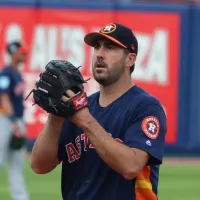
Justin Verlander is a highly accomplished American professional baseball pitcher...

Los Angeles is the most populous city in California and...
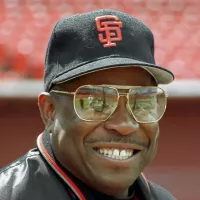
Johnnie B Dusty Baker Jr is a former MLB outfielder...
Virginia officially the Commonwealth of Virginia is a state located...
Trending
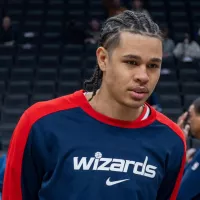
42 minutes ago Kyshawn George's Status Uncertain: Toe Injury Puts Pacers Player's Game in Doubt
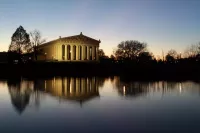
42 minutes ago Nashville debates $15M surveillance plan, raising concerns about safety versus privacy downtown.
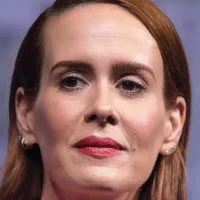
2 hours ago Sarah Paulson Receives Hollywood Walk of Fame Star, Honored by Holland Taylor.
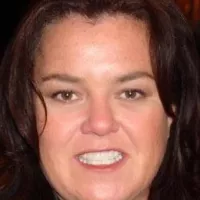
3 hours ago Rosie O'Donnell criticizes Trump; daughter allegedly blames him for move to Ireland.

3 hours ago Vanderpump Rules Season 12 Premieres: How to Watch, Cast Changes, and More.
3 hours ago Lucy Liu Celebrates Birthday with Son Rockwell: Rare Photos and Motherhood Joy
Popular
Aftyn Alyssa Behn is an American politician currently serving as...
Matt and Ross Duffer known as the Duffer Brothers are...

XXXTentacion born Jahseh Dwayne Ricardo Onfroy was a controversial yet...
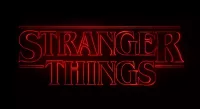
Stranger Things created by the Duffer Brothers is a popular...
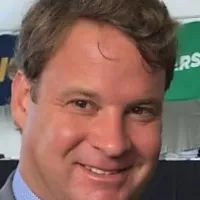
Lane Kiffin is an American football coach currently serving as...
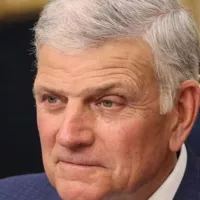
William Franklin Graham III commonly known as Franklin Graham is...